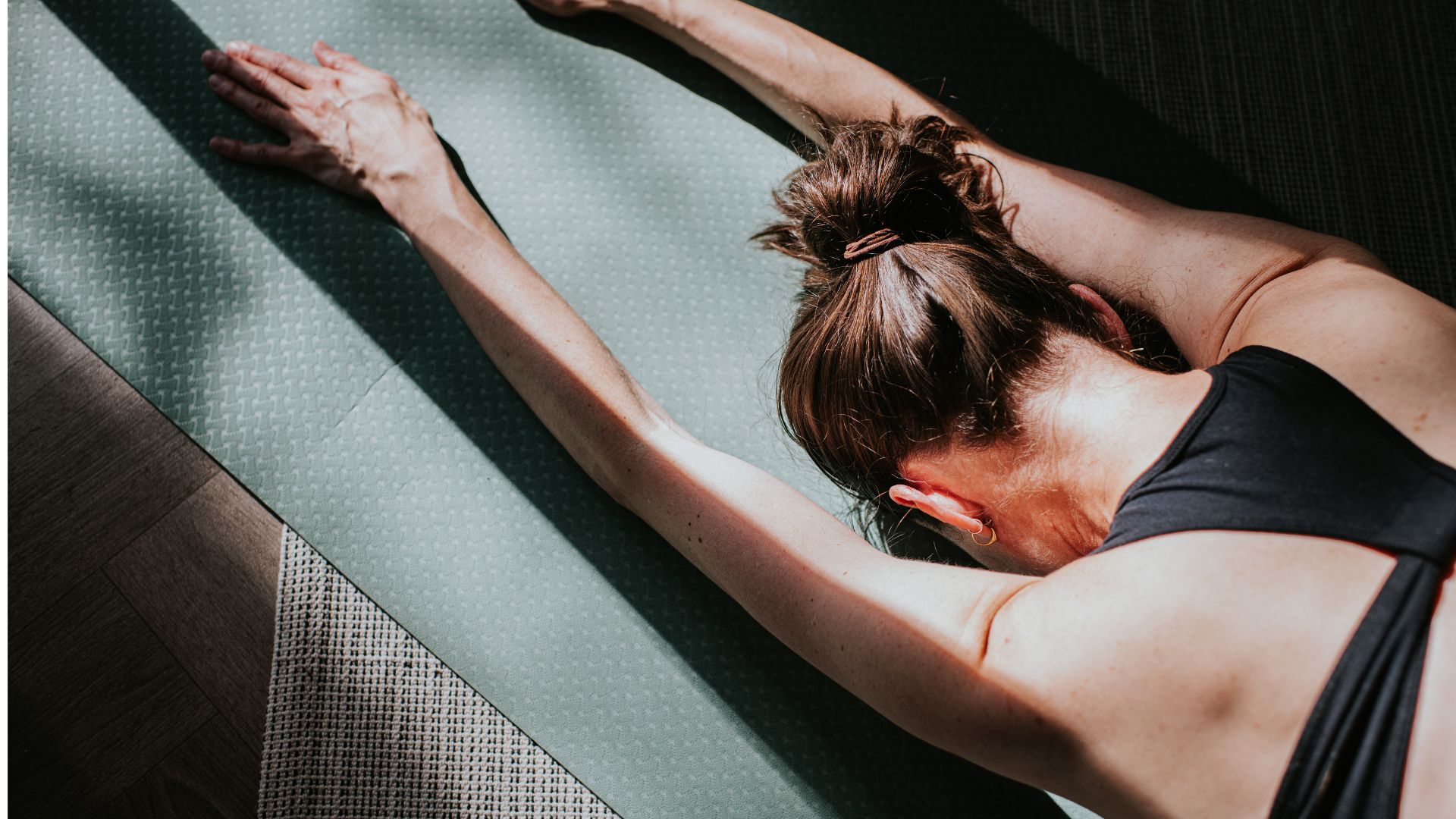
Pilates for beginners is the way to take up the exercise that seems to be growing in popularity year by year. 2025 has been dubbed the 'year of Pilates', with more of us than ever taking up the low-impact, bodyweight or weighted workout.
While the advantages of cardio exercise and weight training are obvious, one reason why Pilates is so popular is that you can reap all of these benefits without leaving your thick yoga mat, depending on the type of Pilates you choose. There's no huffing and puffing and no gym membership required.
"Pilates is a low-impact exercise that strengthens and stabilises the entire body while improving your flexibility and mobility," says Talia Williams, a certified Pilates instructor. "And the best part is that anyone can do it." Plus, the exercise will do wonders for your wellbeing by focusing on the mind-body connection with breathwork and mindful movement.
Whether you're looking to dive into a full-body Pilates workout or try your hand at reformer Pilates, here's what the experts want you to know about starting from scratch and doing Pilates for beginners - whatever your age and fitness level.
What is Pilates?
There are many different types of Pilates, but it's essentially a low-impact workout that strengthens the entire body, improves balance and stability, and boosts mental wellness. Some types of Pilates are done on a yoga mat while others use weights, springs, and supports like resistance bands.
What makes it a winner for beginners is that each exercise can be modified and adapted to suit. It's also very easy to progress once you have the basic core exercises down, so while you might start with a chair workout, you could find yourself doing yoga mat workouts in just a few weeks.
The practice has become very popular in recent years - but it was originally developed in the 1920s by Joseph Pilates, who studied yoga, martial arts, and meditation. While interned in a hospital during the First World War, Joseph discovered that attaching springs (i.e. resistance) to hospital beds could support the rehabilitation of bed-bound patients.
Much of his early work is still seen in the modern versions of Pilates as his makeshift exercise equipment at the hospital later inspired the Pilates Reformer, which is used in reformer Pilates classes and by those who do reformer Pilates at home. The practice has also stayed focused on different strength training exercises over the years, emphasising the connection between breath, the body and the mind.
Try Pilates for beginners
This full-body workout by physical therapist and certified Pilates instructor Jessica Valant is only 15 minutes long and makes for a great introduction to Pilates for beginners. You won't need any equipment to get started - just your yoga mat.
1. Glute bridge
- Exhale, curl your tailbone and roll up into the bridge as if you're trying to peel off "one vertebrae at a time" from the mat.
- Hips should be in line with your knees - or as high as you can.
- Inhale at the top, exhale and roll back down to your mat slowly.
- Repeat the exercise.
2. Toe taps
- Lying on your back, bring one leg slowly up to tabletop position. This is about 90 degrees.
- Bring the same leg down, tapping your toes lightly on the ground.
- Bring the same leg up to tabletop position again.
- Repeat the exercise, then switch legs.
- This is one of the core exercises to do at home so Valant suggests coming back to tabletop and toe taps if you find a crunch, or similar exercise, too difficult.
3. Leg circles
- Keep one leg in the tabletop position from the toe taps exercise.
- Extend at the knee, reaching out away from you as if there's a ball in front of your toes.
- With your toes, draw a 'circle' in the air the size of that ball. Keep your hands, face, and neck relaxed.
- Think about moving your leg without moving any other part of the body. This strengthens through the leg, the hip, and the core, Valant says in the video.
- Switch directions and repeat the exercise, before switching legs.
3. Chest lifts
- Lay on your back with your hands behind your head, thumbs at the base of your skull and elbows wide.
- Take a deep breath, tuck your chin to your chest, and peel your head and your shoulders off the mat. If you can, take your shoulder blades off the mat.
- Then peel yourself slowly back down.
- Avoid looking at the ceiling - focus on your knees or belly button instead, Valant suggests.
4. Side-lying leg circles
- Release your arms from the chest lifts and roll onto your left side, with your head resting in your hand or use a pillow for support.
- Stack your hips and knees, extend your top leg out, and point your toes. It should be in line with your hip.
- Flex your foot and bring your leg forward in front of you.
- Point your toes and bring your leg back to the starting position.
- Repeat the exercise a few times.
- On your next foot flexion forward, bring your leg up and around to create a circle. Switch directions.
- Taking your time, press up and switch to the other side, resuming the position.
5. Swimming
- Lie on your stomach with your upper body propped up on your elbows. If this feels like enough of a challenge, stay here.
- If you can go further, extend your legs behind you and extend your arms in front of you. Lift your chest slightly.
- Lift both arms and legs fractionally off the ground.
- Alternate kicking your arms and your legs.
- Breathe in and out.
6. Rotations
- Gently move into child's pose before navigating your way slowly to sitting down with your legs out in front of you, spine straight.
- Put both hands behind your head, breathe in and out.
- Breathe in, gently rotate left, and breathe out as you return to the centre.
- Inhale, gently rotate to the right, and breathe out as you return to the centre.
A thick yoga mat can help support your bones and joints through your session. At 6mm minimum, they can help prevent aches and pains before you start.
The key to a good workout is to be comfortable and a smooth pair of yoga leggings can see you through any Pilates workout.
Should you want to do Pilates without a yoga mat or Reformer Pilates, it's handy to have these socks with sticky pads on the bottom to help keep your grip.
Benefits of Pilates for beginners
- Build muscle strength: Many classes have a dedicated strength goal - like a Pilates abs workout or lower-body workout. These can help strengthen particular muscles in the body and, in turn, this can help reduce the risk of muscle loss that often comes with perimenopause.
- Boost joint strength and stability: "It’s a great way to mobilise our joints, so we're able to work them through a full range of motion and move freely without tension," says Pilates teacher Lotty Somers.
- Improved posture: The muscles in the back tend to weaken with age, which can lead to joint and disc issues, says Abby McLachlan, a certified Pilates instructor and the founder of East of Eden. "Pilates concentrates on strengthening the deep postural muscles, raising awareness of how one stands and the general alignment of hips, spine and head," she says. "This awareness alone can go a long way to improving posture."
- Lose weight: It's not intense like the 15-15-15 workout, but studies have shown that Pilates can help with weight loss. Research in the Frontiers in Physiology Journal found that Pilates could "dramatically" reduce body weight, BMI, and body fat percentage in overweight and obese adults.
- May help to reduce back pain: If you're dealing with lower back pain, you should speak to a certified physiotherapist or your doctor. However, Pilates can also help as the "practice focuses on supporting the muscles around your spine - your core and glutes, as well as ensuring the other joints are supported by strong local muscles, reducing the chance of injury and relieving pain, especially back pain."
- Boost your sex life: Yes, really! "Pilates can help you have better sex at any age through the focus on the pelvic floor, plus increased fitness and endurance, says McLachlan.
- Reduce stress: We know that any exercise can help us reduce stress thanks to those feel-good endorphins - and Pilates for beginners is one of them. "The use of breath in Pilates can help reduce stress and leave us feeling instantly lighter, so it’s a great way to boost our mood and improve our overall mental health and wellbeing," says Somers.
- Improve concentration: "By learning new movements and motor patterns, we’re also training our concentration and coordination, which can positively affect on our work and home life as well," says Williams.
Is Pilates a good workout?
In short, yes! There is much more to Pilates than stretching on a mat, so don’t be fooled - it’s a challenging, full-body workout. With a focus on activating targeted muscles, even the smallest of movements will have you feeling the burn and working your body in a whole new way.
"Some moves can be very challenging but it’s not about being perfect and it’s important to listen to your body and execute each movement to the best of your ability," says Somers. "We need to dispel the idea of needing to move in a certain way and remember that a little progress each day adds up to big results."
What do I need for Pilates?
As with any form of exercise, comfort is key. Lotty advises against wearing anything with zips that might dig into your skin during mat exercises. "I would always recommend slightly tighter-fitting activewear too, as this can make you more aware of your form and alignment," Somers says. "You want to feel confident in what you're wearing as this will help you to stand tall and encourage better posture."
Finding the best workout leggings for you - whether that's leopard print activewear or your favourite black gym leggings - and a comfortable sports bra that will see you through all your workouts is essential for your fitness journey.
Pilates socks can also provide support as you transition through the moves, particularly if you're working out at home or without a yoga mat. They should have non-slip silicone grips from toe to heel. Some even offer compression features for extra arch support.







